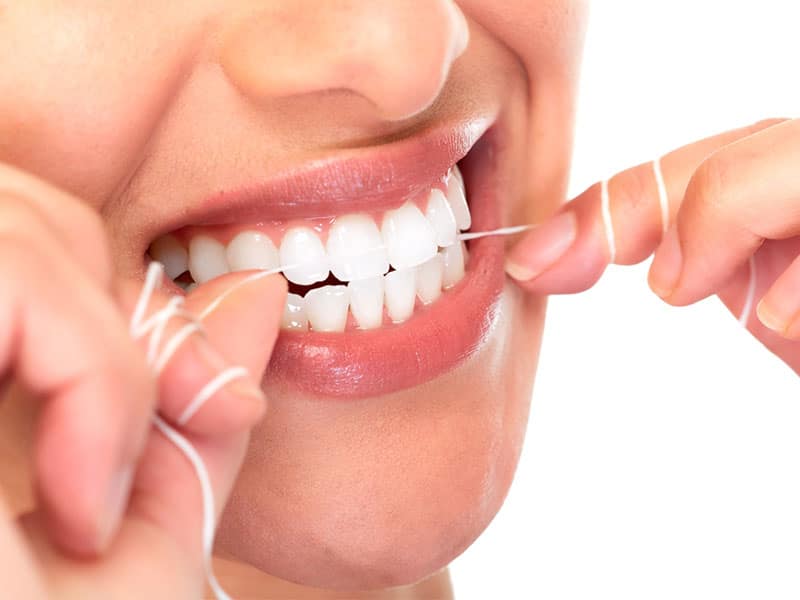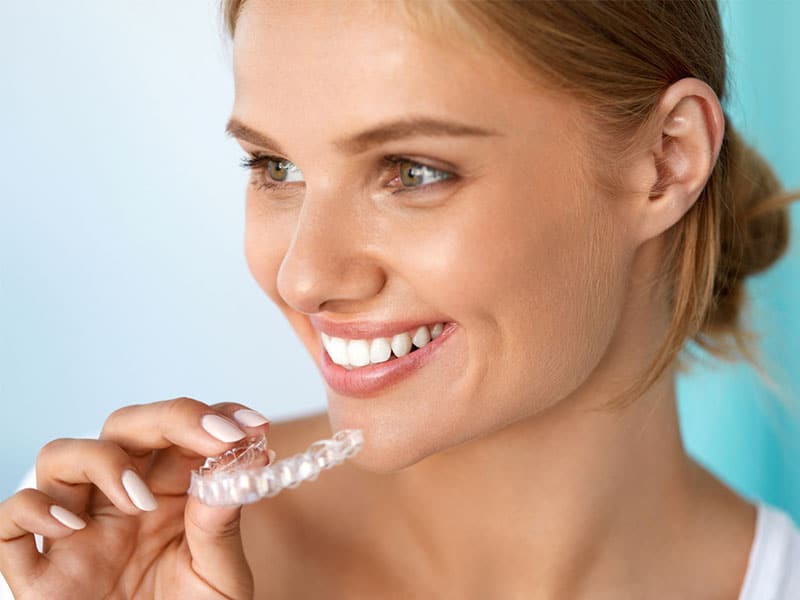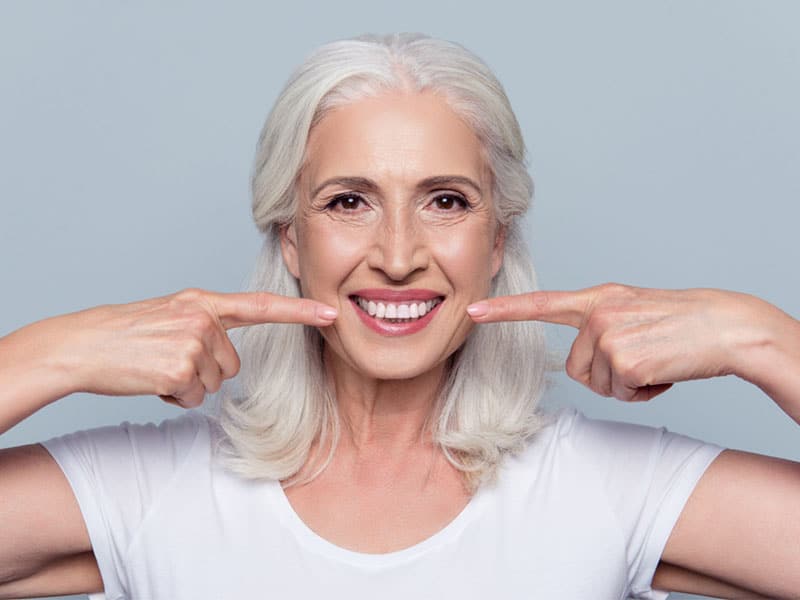If you are considering teeth straightening treatments for your teeth or your children’s teeth, you’ll be happy to know that having straight teeth benefits not just your smile but also your overall health. We speak to dentists and dental surgeons in Singapore about the many benefits of straight teeth. Plus, where to go for Invisalign and braces in Singapore!
Straight teeth means healthier, cleaner gums
The first step to great dental health is proper oral care, and teeth straightening can make a huge difference. “Straight teeth help facilitate more effective tooth brushing,” says Dr Clara Gibson of Expat Dental. The UK-trained dentist, who focuses her practice in orthodontics, explains that having straight teeth makes it much easier to reach all the little nooks and crannies in your mouth. “This means less risk of getting gum disease and decay.”
In addition, when teeth are too widely spaced or crowded, they may become inflamed and red. This could be a sign of periodontal disease, an infection of the structures around the teeth, including the gums. Aligning your teeth helps the gums fit properly around them. It therefore creates the strongest possible protection against periodontal problems, which can range from mild redness, swelling of the gums (gingivitis) and bleeding when you brush, to complete damage to the support structure of a tooth, and eventual tooth loss.
A cleaner mouth benefits your overall health
“With better oral hygiene and less food trapping, your gum health will improve. A beautiful and fresh smile will then follow,” adds Dr Ariel Guo of Aesthete Smilestudio. This means better health, too!
Not only is poorly controlled gum disease known to make it harder to manage diabetes mellitus but poorly controlled diabetes can also lead to worsening of gum disease. There is even increasing evidence that gum disease can increase the likelihood of developing heart disease. Meanwhile, having straight teeth reduces bacteria accumulation, thus reducing the onset of gum disease.

Thus, the ability to practice effective dental hygiene means you can remove bacteria before it becomes problematic not just for your oral health but your overall health, too. After all, an infection in your mouth can pass through your blood stream. So, what goes on in your mouth can affect the rest of your body. And, what goes on in your body can also affect your mouth!
Proper alignment can help prevent abnormal tooth wear
Properly aligned teeth can also relieve the problems that stem from improper bite, speech or chewing difficulties, jaw problems and increased wear on the tooth enamel.
“Having straight teeth gives you more even distribution of biting forces,” says Dr Thean Tsin Piao of Aesthete Smilestudio. “The teeth will wear out more evenly. This prevents excessive wear of some teeth when the teeth are crooked.”
Straight teeth can improve your mental health, too
A crucial component of your overall health is, of course, your mental health. Studies have shown that having a better smile not only increases how much you smile, but also improves your confidence and lowers your stress levels.
However, it’s easy for misaligned teeth to dampen your bright smile. Aside from implications such as affecting your jawline and how your lips look, misaligned teeth are also more prone to having food trapped between them. This may lead to embarrassing moments or even some social anxiety.
“Patients often tell me that they notice food getting stuck between their front teeth after eating, and that they can feel self-conscious about this when dining out with friends and colleagues,” explain Dr Gibson. “This tends to happen when teeth are not aligned. Rotated or overlapping teeth tend to trap food debris more easily.”
Tailored teeth straightening treatment in Singapore
Luckily, there is a host of aesthetically pleasing options like Invisalign and lingual braces in Singapore. This leads to more and more people deciding to correct their smiles with these treatments.
“Clear aligners such as Invisalign are very effective at teeth straightening, often achieving results in as little as six months,” explains Dr Gibson of Expat Dental. “They provide a more discreet alternative to traditional braces and offer the flexibility for patients to remove them for important presentations or eating.”
Additionally, Dr Gibson considers lingual braces in Singapore – which are hidden on the inside of the teeth – a good option for patients who require more complex bite adjustments while also wanting an invisible solution. “They are also great for patients who tell me that they know they won’t comply with aligners!”
At Expat Dental, you’ll find orthodontic treatments that address all types of bite issues. The duration of treatment depends on the complexity of the problem. “Some patients, however, tell me that they have a specific timeframe, for example, nine to twelve months before they leave Singapore. In such cases, we aim to accomplish as much as possible within that time period.” Expat Dental’s orthodontic treatment is adaptable to the patient, allowing Dr Gibson and her team to tailor the approach to fit their lifestyle situation.
And are these teeth straightening treatments painful? Minimally, says Dr Gibson. “Teeth move slowly and progressively, so other than occasional tenderness when biting, these are actually some of the ‘nicer’ dental procedures to have done. There is no drilling, no injections. Patients see me for a quick adjustment or review every six weeks. At the end of treatment, we fit retainers and then see patients for periodic reviews. I’m always happy to see my patients reach the end of their treatment, but also sad that we don’t get to catch up every six weeks!”
Straightening your teeth at any age
Orthodontic treatment can be successful at any age, as teeth can continue to be straightened in adulthood.
“While people most often associate orthodontic treatment with teenagers, orthodontists treat all ages,” says Dr Thushala Ubaya of Smilefocus. “There is no age limit for starting orthodontic treatment. Today’s orthodontic technologies ensure the most efficient and effective paths for orthodontic correction.”
A bit more on Invisalign
“Clear aligners are a good alternative to wearing fixed braces. They are clear, removable appliances that sit over the teeth, like a mouthguard – but they’re specially engineered for each patient,” says Dr Ubaya. “Additionally, aligners are easy to wear and easy to keep clean, and are simple to replace if you lose them.”

Dr Thean Tsin Piao of Aesthete Smilestudio says Invisalign is especially popular among his patients. The clear, removable aligners are comfortable and predictable, and can be taken out before every meal. What’s more, Invisalign is discreet and invisible to the naked eye at arm’s length, he says. For these reasons, more and more of his adult and teen patients are favouring the clear aligners over traditional braces in Singapore. In fact, Dr Thean says he finds that his Invisalign patients are more willing to be socially active, since their peers, colleagues, friends, clients and supervisors don’t know they’re having orthodontic treatment.
Even kids are experiencing the benefits of Invisalign, particularly the added confidence it brings. According to Dr Thean, a child can start as soon as most of their baby teeth have come out. He does caution, however, that starting the treatment too early can cause “treatment fatigue and a loss of motivation that can result from a too-long treatment process.” So, it’s best to consult your dentist to choose the solution that’s right for the individual child.
Children and teens: Invisalign or traditional braces in Singapore?
So, what’s most popular among children and teens when it comes to Invisalign and braces in Singapore? It’s really a 50-50 split between braces and Invisalign, says Dr May Eide, a dentist with specialty training in orthodontics from the UK. At Skye Dental, she sees young patients will all kinds of jaw problems. And, the choice of type of appliance, she says, really depends on the nature of the problem and the best possible way to manage it.
“There are some clinical problems that are better suited to being treated with Invisalign, while others would benefit most from traditional braces.”
Things to consider when choosing between Invisalign and braces
While many of her young patients who come for an orthodontic consultation are keen to explore Invisalign, Dr Eide says there are many pros and cons to consider for both types of appliance. Compliance, for instance, is a major consideration with Invisalign; a child or teen will need to remember to put it back in after eating.
“Invisalign treatment requires a lot of discipline and motivation,” says Dr Eide. “Some children are more forgetful and may lose their aligners more easily compared to others. Some also forget to put the aligners back in after lunchtime. This affects the total number of hours of daily wear, which, in turn, affects tooth movement.”
Not only can this result in increased treatment time, but it can also create increased frustration for both the parent and the child.
Comfort, of course, is another consideration. Invisalign may be more comfortable than fixed braces as no wires or sharp braces are bonded to the teeth.
Ultimately, Dr Eide says that the three main factors affecting the final choice of appliance tend to be:
- the suitability of the case;
- the child’s preferences (and the parent’s opinion!); and,
- cost.
“Your orthodontist will be the best person to advise you as to what the pros and cons are of each appliance, as these choices can affect total treatment time, patient comfort, and the fees involved in the treatment.”
Directory for Invisalign and braces in Singapore
Expat Dental
Unit 08-15/16, Novena Medical Centre, 10 Sinaran Drive
6397 6718 | expatdental.com
Aesthete Smilestudio
50 Raffles Place #03-01A Singapore Land Tower
6438 3811 | aesthetesmilestudio.com
Skye Dental
38 Club Street
6980 5751 | skyedental.sg
Smilefocus
#08-02/03 and #08-07/08 Camden Medical Centre, 1 Orchard Boulevard
6834 0877 |smilefocus.com.sg
Like this? Read more in our Health & Fitness section:






